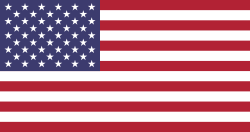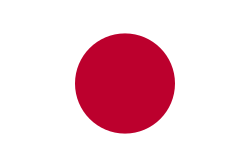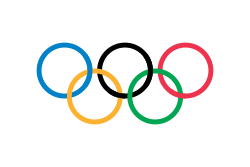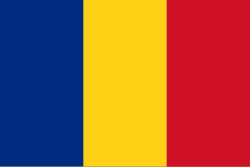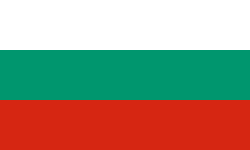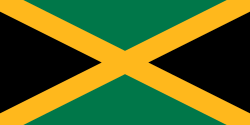Olympische Winterspiele 1992/Bob – Viererbob (Männer)
| Sportart | Bob | ||||||||
| Disziplin | Viererbob | ||||||||
| Geschlecht | Männer | ||||||||
| Teilnehmer | 124 Athleten aus 20 Ländern | ||||||||
| Wettkampfort | Piste de La Plagne | ||||||||
| Wettkampfphase | 21. und 22. Februar 1992 | ||||||||
| Siegerzeit | 3:53,90 min | ||||||||
| |||||||||
| |||||||||
Olympischen Winterspielen 1992 | |
| Zweierbob | Männer |
| Viererbob | Männer |
Der Viererbob der Männer bei den Olympischen Winterspielen 1992 in Albertville bestand aus vier Läufen, von denen zwei am 21. und zwei am 22. Februar 1992 ausgetragen wurden. Austragungsort war die Piste de La Plagne. Am Start waren 124 Teilnehmer aus 20 Ländern. Olympiasieger wurden die Österreicher Ingo Appelt, Harald Winkler, Gerhard Haidacher und Thomas Schroll mit einer Gesamtzeit von 3:53,90 Minuten. Die Silbermedaille holten die Deutschen Wolfgang Hoppe, Bogdan Musiol, Axel Kühn und René Hannemann vor Gustav Weder, Donat Acklin, Lorenz Schindelholz und Curdin Morell aus der Schweiz, die die Bronzemedaille gewann.
Titelträger
| Olympiasieger | Ekkehard Fasser Kurt Meier Marcel Fässler Werner Stocker | Calgary 1988 |
| Weltmeister | Wolfgang Hoppe Bogdan Musiol Axel Kühn Christoph Langen | Altenberg 1991 |
Ergebnisse
| Rang | Athleten | Nation | Lauf 1 | Lauf 2 | Lauf 3 | Lauf 4 | Gesamt | ||||
|---|---|---|---|---|---|---|---|---|---|---|---|
| Zeit (min) | Rang | Zeit (min) | Rang | Zeit (min) | Rang | Zeit (min) | Rang | Zeit (min) | |||
| 1 | Ingo Appelt Harald Winkler Gerhard Haidacher Thomas Schroll | 57,74 | 1 | 58,85 | 10 | 58,52 | 1 | 58,79 | 3 | 3:53,90 | |
| 2 | Wolfgang Hoppe Bogdan Musiol Axel Kühn René Hannemann | 58,00 | 3 | 58,52 | 1 | 58,68 | 7 | 58,72 | 2 | 3:53,92 | |
| 3 | Gustav Weder Donat Acklin Lorenz Schindelholz Curdin Morell | 57,97 | 2 | 58,78 | 6 | 58,59 | 3 | 58,79 | 3 | 3:54,13 | |
| 4 | Chris Lori Ken Leblanc Cal Langford David MacEachern | 58,00 | 3 | 58,71 | 3 | 58,66 | 6 | 58,87 | 7 | 3:54,24 | |
| 5 | Christian Meili Bruno Gerber Christian Reich Gerold Löffler | 58,15 | 5 | 58,75 | 5 | 58,59 | 3 | 58,89 | 8 | 3:54,38 | |
| 6 | Harald Czudaj Tino Bonk Axel Jang Alexander Szelig | 58,54 | 9 | 58,55 | 2 | 58,62 | 5 | 58,71 | 1 | 3:54,42 | |
| 7 | Mark Tout George Farrell Paul Field Lenny Paul | 58,49 | 8 | 58,87 | 12 | 58,73 | 9 | 58,80 | 5 | 3:54,89 | |
| 8 | Christophe Flacher Claude Dasse Thierry Tribondeau Gabriel Fourmigué | 58,45 | 7 | 58,79 | 7 | 58,78 | 11 | 58,89 | 8 | 3:54,91 | |
| 9 | Randy Will Joe Sawyer Karlos Kirby Chris Coleman | 58,57 | 10 | 58,71 | 3 | 58,75 | 10 | 58,89 | 8 | 3:54,92 | |
| 10 | Gerhard Rainer Thomas Bachler Carsten Nentwig Martin Schützenauer | 58,27 | 6 | 58,85 | 10 | 59,08 | 14 | 58,81 | 6 | 3:55,01 | |
| 11 | Chuck Leonowicz Bob Weissenfels Bryan Leturgez Jeff Woodard | 58,74 | 12 | 58,99 | 13 | 58,56 | 2 | 58,94 | 12 | 3:55,23 | |
| 12 | Pasquale Gesuito Antonio Tartaglia Paolo Canedi Stefano Ticci | 58,78 | 14 | 58,83 | 8 | 59,12 | 15 | 59,15 | 15 | 3:55,88 | |
| 13 | Nick Phipps Edd Horler Colin Rattigan David Armstrong | 58,86 | 15 | 58,83 | 8 | 59,29 | 16 | 58,93 | 11 | 3:55,91 | |
| 14 | Sandis Prūsis Juris Tone Ivars Bērzups Adris Plūksna | 59,05 | 19 | 59,07 | 16 | 58,72 | 8 | 59,08 | 13 | 3:55,92 | |
| 15 | Günther Huber Marco Andreatta Thomas Rottensteiner Antonio Stiffi | 58,76 | 13 | 59,11 | 17 | 58,97 | 13 | 59,14 | 14 | 3:55,98 | |
| 16 | Zintis Ekmanis Aldis Intlers Boriss Artemjevs Otomārs Rihters | 59,02 | 16 | 58,99 | 13 | 59,35 | 18 | 59,36 | 16 | 3:56,72 | |
| 17 | Toshio Wakita Ryoji Yamazaki Fuminori Tsushima Naomi Takewaki | 59,23 | 21 | 59,30 | 18 | 59,33 | 17 | 59,38 | 17 | 3:57,24 | |
| 18 | Bruno Mingeon Stéphane Poirot Didier Stil Dominique Klinnik | 59,03 | 17 | 59,33 | 19 | 59,52 | 20 | 59,53 | 20 | 3:57,41 | |
| 19 | Oleg Suchorutschenko Oleksandr Bortjuk Wladimir Ljubowizki Andrei Gorochow | 59,05 | 19 | 1:00,05 | 22 | 58,94 | 12 | 59,39 | 19 | 3:57,43 | |
| 20 | Paul Neagu Laszlo Hodos Laurențiu Budur Costel Petrariu | 59,04 | 18 | 59,52 | 20 | 59,50 | 19 | 59,38 | 17 | 3:57,44 | |
| 21 | Jiří Džmura Pavel Puškár Karel Dostál Roman Hrabaň | 59,30 | 22 | 59,66 | 21 | 59,92 | 21 | 59,67 | 21 | 3:58,55 | |
| 22 | Zwetosar Wiktorow Dimitar Dimitrow Jordan Iwanow Walentin Atanassow | 1:00,05 | 24 | 1:00,28 | 24 | 1:00,09 | 22 | 1:00,17 | 22 | 4:00,59 | |
| 22 | Wladimir Jefimow Oleg Petrow Sergei Kruglow Alexander Paschkow | 59,80 | 23 | 1:00,19 | 23 | 1:00,34 | 23 | 1:00,26 | 23 | 4:00,59 | |
| 24 | Zdravko Stojnić Dragiša Jovanović Miro Pandurević Ognjen Sokolović | 1:00,16 | 26 | 1:00,28 | 24 | 1:00,59 | 26 | 1:00,27 | 24 | 4:01,30 | |
| 25 | Dudley Stokes Ricky McIntosh Michael White Chris Stokes | 1:00,12 | 25 | 1:00,48 | 27 | 1:00,38 | 24 | 1:00,39 | 25 | 4:01,37 | |
| 26 | Chen Chin-San Chen Chin-Sen Hsu Kuo-Jung Chang Min-Jung | 1:00,31 | 27 | 1:00,45 | 26 | 1:00,52 | 25 | 1:00,66 | 26 | 4:01,94 | |
| 27 | Albert Grimaldi Gilbert Bessi Michel Vatrican David Tomatis | 1:00,49 | 28 | 1:00,66 | 28 | 1:00,74 | 27 | 1:00,74 | 27 | 4:02,63 | |
| 28 | Luis Adrián Tamés Ricardo Rodríguez Francisco Negrete Carlos Casar | 1:00,97 | 30 | 1:01,36 | 30 | 1:01,30 | 28 | 1:01,51 | 28 | 4:05,14 | |
| 29 | Sven Petersen Michael Juhlin James Withey Paul Zar | 1:02,45 | 31 | 1:02,52 | 31 | 1:02,73 | 29 | 1:02,65 | 29 | 4:10,35 | |
| DNF | Daniel Burgner Ernest Mathias David Entwistle Bill Neill | 1:00,92 | 29 | 1:01,08 | 29 | – | DNS | – | – | – | |
| DSQ | Dennis Marineau Chris Farstad Jack Pyc Sheridon Baptiste | 58,61 | 11 | 59 | 15 | – | DSQ | – | – | – | |
Weblinks
- Viererbob bei den Olympischen Winterspielen 1992 in der Datenbank von Olympedia.org (englisch)
Auf dieser Seite verwendete Medien
Olympic Rings without "rims" (gaps between the rings), As used, eg. in the logos of the 2008 and 2016 Olympics. The colour scheme applied here was specified in 2023 guidelines.
Olympic Rings without "rims" (gaps between the rings), As used, eg. in the logos of the 2008 and 2016 Olympics. The colour scheme applied here was specified in 2023 guidelines.
Autor/Urheber: B1mbo, Lizenz: CC BY-SA 2.5
Zeichnung einer Goldmedaille, basierend auf Olympic rings.svg.
Flagge Österreichs mit dem Rot in den österreichischen Staatsfarben, das offiziell beim österreichischen Bundesheer in der Charakteristik „Pantone 032 C“ angeordnet war (seit Mai 2018 angeordnet in der Charakteristik „Pantone 186 C“).
Autor/Urheber: B1mbo, Lizenz: CC BY-SA 2.5
Zeichnung einer Silbermedaille, basierend auf Olympic rings.svg.
Autor/Urheber: B1mbo, Lizenz: CC BY-SA 2.5
Zeichnung einer Bronzemedaille, basierend auf Olympic rings.svg.
Die quadratische Nationalfahne der Schweiz, in transparentem rechteckigem (2:3) Feld.
Flag of Canada introduced in 1965, using Pantone colours. This design replaced the Canadian Red Ensign design.
Flagge des Vereinigten Königreichs in der Proportion 3:5, ausschließlich an Land verwendet. Auf See beträgt das richtige Verhältnis 1:2.
Flagge des Vereinigten Königreichs in der Proportion 3:5, ausschließlich an Land verwendet. Auf See beträgt das richtige Verhältnis 1:2.
Flag of Italy from 1946 to 2003, when exact colors were specified.
Olympische Flagge
Flag of the Socialist Federal Republic of Yugoslavia (1946-1992).
The design (blazon) is defined in Article 4 of the Constitution for the Republic of Yugoslavia (1946). [1]
Flag of the Socialist Federal Republic of Yugoslavia (1946-1992).
The design (blazon) is defined in Article 4 of the Constitution for the Republic of Yugoslavia (1946). [1]
Chinese Taipei Olympic Flag. According to the official website of Chinese Taipei Olympic Committee, Blue Sky(circle) & White Sun(triangles) above the Olympic rings is neither the National Emblem of the Republic of China, nor the Party Emblem of Kuomintang (KMT), but a design in between, where the triangles do not extend to the edge of the blue circle, as registered at International Olympic Committee in 1981 and digitally rendered in 2013. Besides, the blue outline of the five-petaled plum blossom is broader than the red one. Moreover, the CMYK code of the blue one and the Blue Sky & White Sun is "C100-M100-Y0-K0", and different from the Olympic rings (C100-M25-Y0-K0). Note that it's the only version recognized by IOC.
Chinese Taipei Olympic Flag. According to the official website of Chinese Taipei Olympic Committee, Blue Sky(circle) & White Sun(triangles) above the Olympic rings is neither the National Emblem of the Republic of China, nor the Party Emblem of Kuomintang (KMT), but a design in between, where the triangles do not extend to the edge of the blue circle, as registered at International Olympic Committee in 1981 and digitally rendered in 2013. Besides, the blue outline of the five-petaled plum blossom is broader than the red one. Moreover, the CMYK code of the blue one and the Blue Sky & White Sun is "C100-M100-Y0-K0", and different from the Olympic rings (C100-M25-Y0-K0). Note that it's the only version recognized by IOC.
Pictograms of Olympic sports - Bobsleigh









